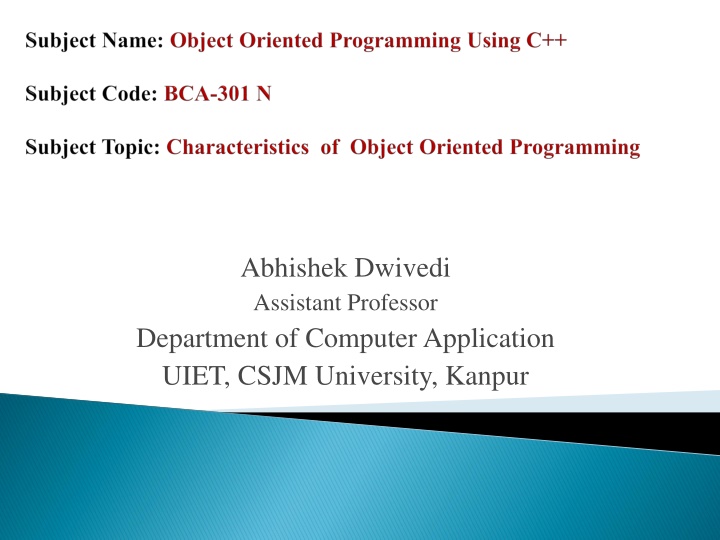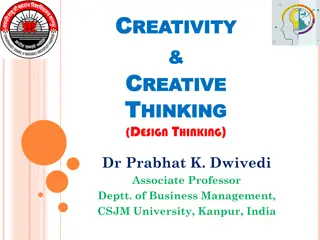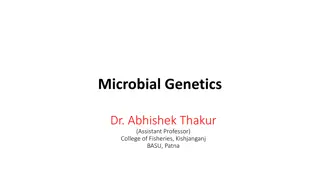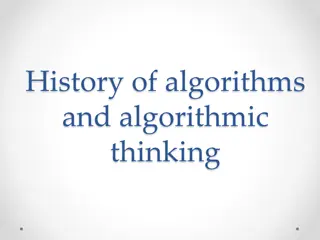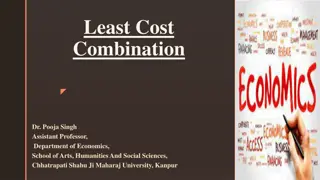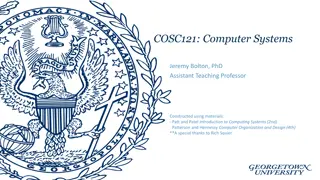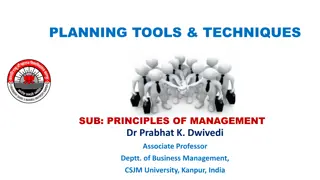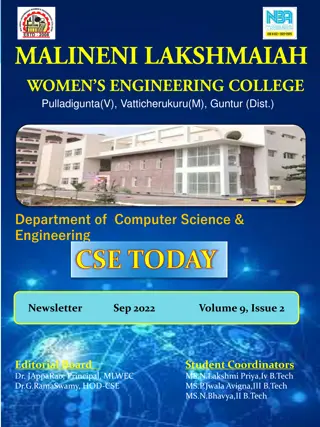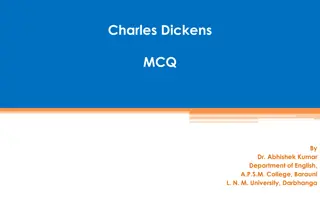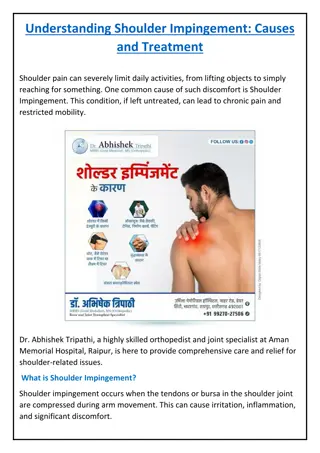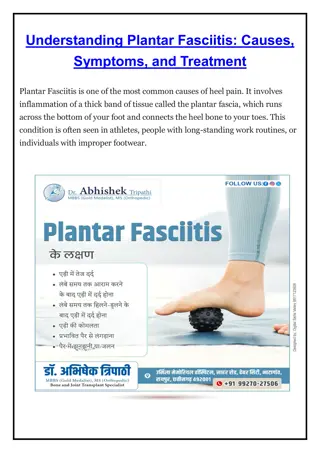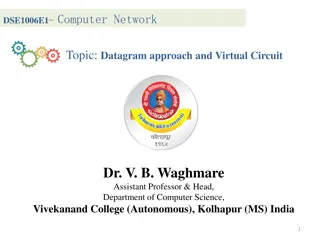Abhishek Dwivedi Assistant Professor at Department of Computer Application, CSJM University, Kanpur
Abhishek Dwivedi is an Assistant Professor in the Department of Computer Application at UIET, CSJM University, Kanpur. With expertise in computer science, he is dedicated to advancing knowledge and research in the field. His role involves teaching, mentoring students, and contributing to academic development. Through his work, he aims to inspire and empower the next generation of computer professionals.
Uploaded on Feb 16, 2025 | 9 Views
Download Presentation

Please find below an Image/Link to download the presentation.
The content on the website is provided AS IS for your information and personal use only. It may not be sold, licensed, or shared on other websites without obtaining consent from the author.If you encounter any issues during the download, it is possible that the publisher has removed the file from their server.
You are allowed to download the files provided on this website for personal or commercial use, subject to the condition that they are used lawfully. All files are the property of their respective owners.
The content on the website is provided AS IS for your information and personal use only. It may not be sold, licensed, or shared on other websites without obtaining consent from the author.
E N D
Presentation Transcript
Abhishek Dwivedi Assistant Professor Department of Computer Application UIET, CSJM University, Kanpur
Objects Classes Encapsulation Abstraction Inheritance Polymorphism
Objects: Object is a real world entity, In other words, object is an entity that has state and behavior. Here, state means data and behavior means functionality. Object is a runtime entity, it is created at runtime. Object is an instance of a class. All the members of the class can be accessed through object. As the name object-oriented implies, objects are key to understanding object-oriented technology. There are many examples of real-world objects: dog, television set, bicycle etc.
Classes:A class is the building block that leads to Object-Oriented programming. It is a user-defined data type, which holds its own data members and member functions, which can be accessed and used by creating an instance of that class. A class is like a blueprint for an object.
Encapsulation is defined as wrapping up of data and information under a single unit. In Object-Oriented Programming, Encapsulation is defined as binding together the data and the functions Encapsulation also leads to data abstraction or hiding. As using encapsulation also hides the data. In the above example, the data of any of the section like sales, finance or accounts are hidden from any other section. that manipulate them.
Data abstraction is one of the most essential and important features of object-oriented Abstraction means displaying only essential information and hiding the details. Data abstraction refers to providing only essential information about the data to the outside world, hiding the background details or implementation. programming in C++.
Using inheritance object of one class can inherit or acquire the properties of the object of another class. Inheritance provides reusability of code. As such we can design a new class by acquiring the properties and functionality of another class and in this process, we need not modify the functionality of the parent class. We only add new functionality to the class. Sub Class: The class that inherits properties from another class is called Sub class or Derived Class. Super Class: The class whose properties are inherited by sub class is called Base Class or Super class. Reusability: Inheritance supports the concept of reusability , i.e. when we want to create a new class and there is already a class that includes some of the code that we want, we can derive our new class from the existing class. By doing this, we are reusing the fields and methods of the existing class.
Polymorphism means many forms. Polymorphism is an important feature of OOP and is usually implemented as operator overloading or function overloading. Operator overloading is a process in which an operator behaves differently in different situations. Similarly, in function overloading, the same function behaves differently in different situations. Dynamic Binding: OOP supports dynamic binding in which function call is resolved at runtime. This means that the code to be executed as a result of a function call is decided at runtime. Virtual functions are an example of dynamic binding. Message Passing: In OOP, objects communicate with each other using messages. When objects communicate, information is passed back and forth between the objects. A message generally consists of the object name, method name and actual data that is to be sent to another object.
www.studytonight.com www.tutorialpoint.com www.geeksforgeeks.org Object oriented programming in C++ Robert Lafore Object oriented programming with C++ , E.Balagurusamy
